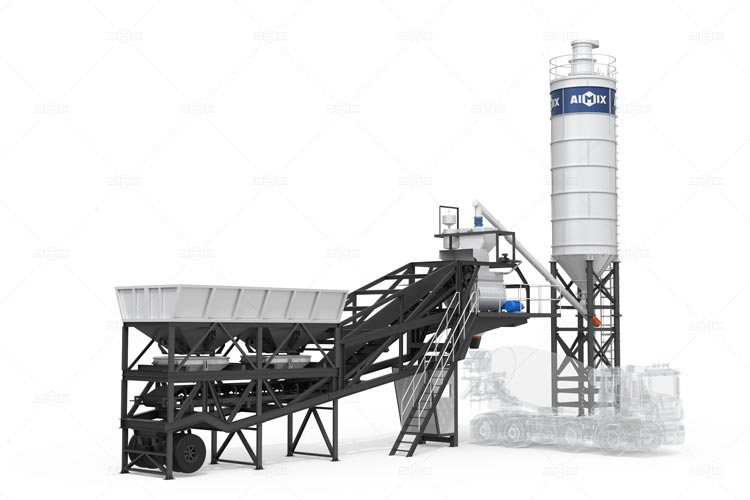


Discover how precision feeding enhance portable concrete plant efficiency, reduce waste, and ensure consistent mix quality in construction projects.
In the dynamic world of construction, portable concrete batch plants have emerged as game-changers, offering unparalleled flexibility for projects requiring on-site concrete production. However, maintaining consistent output quality while adapting to varying site conditions presents unique challenges. At the heart of this operational efficiency lies an often-overlooked component: precision feeding systems. These technological marvels do more than just measure materials—they serve as the central nervous system of mobile batching operations, ensuring seamless production continuity even in the most demanding environments.
The importance of accurate material dosing cannot be overstated in concrete production. Variations as small as 1-2% in water-cement ratio can significantly impact the final product’s strength and durability. Precision feeding systems address this challenge through advanced metering technology, real-time adjustments, and automated control mechanisms. For contractors who rely on portable concrete plant for infrastructure projects, road construction, or remote site work, these systems represent the difference between predictable outcomes and costly inconsistencies.
Modern feeding systems employ two primary measurement methodologies. Gravimetric systems measure materials by weight using load cells, offering superior accuracy particularly for cement and additives. Volumetric systems, while simpler in design, measure by volume using augers or belts, making them suitable for aggregate feeding. The most advanced portable plants now combine both approaches, using gravimetric for fine materials and volumetric for coarse aggregates, achieving optimal balance between precision and throughput.
The true innovation lies in the feedback mechanisms. Contemporary feeding systems utilize closed-loop controls that continuously compare actual discharge rates with target values. When discrepancies emerge—whether due to material bridging, moisture variation, or equipment wear—the system automatically compensates without operator intervention. This self-correcting capability proves invaluable in portable plants where environmental conditions change frequently and technical staff may be limited.
Several specialized elements work in concert to maintain feeding accuracy. High-resolution load cells detect minute weight changes, while variable frequency drives allow precise motor speed adjustments. Moisture sensors compensate for aggregate dampness, and anti-segregation devices ensure material homogeneity. Together, these components create a symphony of precision that maintains mix consistency batch after batch.
Construction projects routinely lose 3-5% of concrete materials to measurement errors and spillage. Precision feeders slash this waste through exact dosing, with some systems demonstrating 99.8% measurement accuracy. The savings extend beyond material costs—reduced waste means fewer cleanup requirements and lower disposal fees, particularly important for urban projects with strict environmental regulations.
Portable plants face unique challenges that fixed facilities don’t encounter. Changes in altitude affect air pressure and material flow. Temperature swings alter material properties. Precision feeding systems compensate for these variables automatically, adjusting gate openings, vibration intensity, and discharge rates to maintain consistent output. This adaptability proves crucial when relocating mobile batch plants between different project sites with distinct environmental profiles.
The next generation of feeding systems will leverage Industrial Internet of Things (IIoT) technology. Wireless sensors will transmit real-time performance data to cloud platforms, enabling predictive maintenance and remote troubleshooting. Machine learning algorithms will analyze historical data to optimize feed rates based on material characteristics and environmental conditions, further reducing human error.
Emerging technologies like spectral analysis and RFID tagging may soon allow systems to identify material properties automatically. Imagine a feeder that detects aggregate moisture content or cement freshness through non-contact sensors, adjusting mix parameters instantaneously. Such advancements could revolutionize quality control in temporary batching operations.
As portable concrete plants become increasingly sophisticated, precision feeding systems will continue to play a pivotal role in their success. These technologies not only ensure consistent concrete quality but also contribute to sustainable construction practices by minimizing resource waste. For contractors looking to maximize efficiency in mobile batching operations, investing in advanced feeding systems isn’t just an upgrade—it’s becoming an operational necessity.
